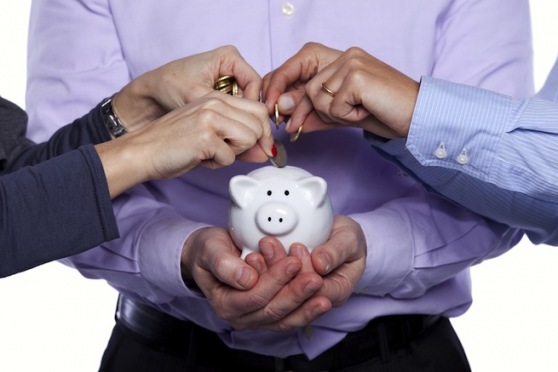In a generation where business has shifted to a global scale, entrepreneurs have begun to capitalize on non traditional ways of funding their business through crowd funding websites like Kickstarter or Indiegogo. While both websites have their own differences, both allow you to post any business endeavor you may have to attract backers that help donate money to kickstart your project. We’ve invited 5 different entrepreneurs to share how they raised a combined $2.1 million for their ideas and surpassed their initial goal of $150,000 (combined).
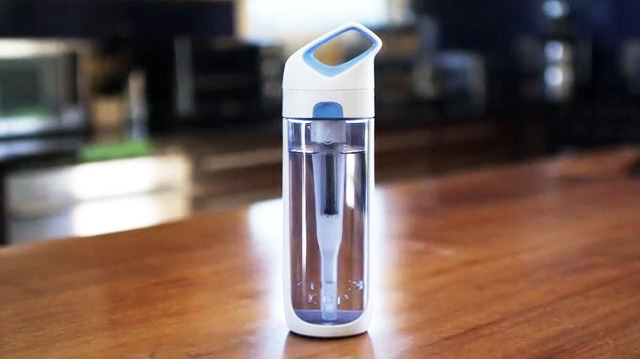
Tell us about your product and what it does.
The KOR Nava is a water bottle that makes ordinary tap water taste great by filtering as you sip. We call it our “bottled water killer” because we think most consumers will stop buying bottled water after using Nava. We also view Nava as a showcase for the power of great design. We obsessed over every detail of the user experience to make sure it would be joyful and intuitive. We obsessed over the materials to make sure they were as heath-safe and sustainable as possible. Ultimately, our goal was to Nava empower consumers to take control of their own hydration and become more sustainable and healthy.
What gave you the idea for your product and what makes it unique?
A filtered bottle was on our roadmap from the start, but there was nothing on the market that met our standards. We knew we could bring our design-centric approach to bear and come up with something amazing.
Throughout, we obsessed over one basic question: how could we create an amazing user experience? One by one, the answers started to come. To ensure drinking comfort we came up with a fantastic ergonomic mouthpiece. To ensure a satisfying flow of water, we fine-tuned the fluid hydraulics of our filter and filter housing. To provide users with quick access to their water and keep the mouthpiece clean, we designed a pushbutton cap that opens with one hand and protects the mouthpiece from germs and dirt. To ensure that people remembered to change their filters, we created a subscription program that delivers replacements to their doors when they need them.
We then found an amazing partner who could manufacture a filter to our specs from coconut shells, which is the most effective material for carbon filtration and unlike coal, is completely health safe and renewable.
Finally, the product had to have sex appeal and style. So we turned our designer loose and he came up with a gorgeous swooping cap, inspired partly by Ducati motorbikes.
Why did you turn to crowd sourcing vs seeking a business loan, bootstrapping, VC’s, or other means of funding?
To be honest, Kickstarter was a gamble, but there were good reasons to think it might work. We had been watching the design category on Kickstarter really take off. Lots of cool, niche products were getting launched. The funding aspect was certainly important – as a niche brand, we don’t presell container loads when we launch a new product. But, equally important, we also saw an opportunity to build our fan base, get feedback on the product, and use our campaign to generate PR.
Lastly we are very good at is storytelling and Kickstarter provides the perfect environment. There was a lot to unpack in this campaign. First, there was the story of the product itself. Nava has a ton of features and the coconut carbon filtration is a story unto itself. Then there was the story of bottled water and how Nava could empower consumers to take control of their own hydration. Finally, there was the story of us – our company and brand and what we stood for.
How did you choose between Kickstarter or Indiegogo?
It was not an easy choice, but we felt our audience – people who are passionate about both design and sustainability – would be easier to find on Kickstarter. Also, several people in our network had launched products successfully on Kickstarter, which gave us an inside track on figuring out a strategy.
What were your goals initially and how did you come up with those figures?
$50K was our “public” funding goal. That would have been enough to cover our remaining tooling costs plus a small initial order. But succeeding on Kickstarter takes a lot of work, so factoring in that opportunity cost, we were hoping for $100K. Of course, we blew by that number which was very gratifying.
How many people have contributed so far and how much towards your goal?
Our campaign ended May 9. 4048 backers contributed $261,677.
How were you able to get traction initially and your first few contributors?
Various people told us that getting off to a fast start was important for Kickstarter success. So we spent a number of weeks developing a plan to create an “echo chamber” effect on social media channels and in the media. Fortunately, we’ve been in business for several years so we were able to leverage some existing resources. We reached out to reporters who had covered us before. We enlisted our existing customers via an email campaign. We asked our non-profit partners to tweet on our behalf. And of course we used Facebook and Twitter to transmit and amplify these messages.
How were you able to get featured / noticed on major publications?
Lots of hard work and preparation. We began our media outreach effort many weeks prior to our campaign launch. We started by compiling a list of all publications that seemed likely to cover a product like Nava. We then prioritized the list and started emailing like crazy. Cold calling the media is a hard way to go, so wherever possible, we got introductions. We also wrote a fun press release that echoed the themes in our campaign. In the first week, I think we got five stories published, fewer than we hoped. But several were from influential blogs, so the story got picked by others and started to spread. By the end of the campaign, I think we had about 25 stories.
Did you have one single incident that really put you on the map? If so, what was it?
If I had to name one great moment, it would be having our product featured in the Ironman 2 movie. To maintain his superhuman powers, Tony Stark is required to periodically drink a special concoction. We make a futuristic looking water bottle called the KOR ONE. I guess the producers thought it was worthy of Tony because that’s what he was drinking from. We were literally part of the plot and had no idea our bottle had been chosen until friends started calling and emailing us!
What do you wish you would do differently for your next crowdfunding project?
Success on Kickstarter comes down to two basic things: driving traffic and converting that traffic into pledges. I think we got a little distracted by other aspects of the campaign. Next time, we’ll try to channel all our efforts into making the biggest impact in those two areas.
What is your best advice for people seeking a successful crowdfunding campaign?
Learn as much as you can about Kickstarter and how best to leverage the platform. Once you figure it out, Kickstarter can be an incredibly powerful tool, but it doesn’t come with an instruction manual. I highly recommend getting advice from people who have already made the journey. But because every campaign is different you will still find yourself improvising no matter how much research and advance planning you do.
Planning is critical. Create a marketing plan, broken down into separate components, such as media outreach, video production, metrics, rewards and social media.
Make sure your video is compelling with a strong call to action and is something that people would want to share.
Be forewarned: Once your Kickstarter is live, a lot of planning goes out the window. You’ll need to start improvising. Are some rewards failing to attracting backers? You may need to swap in new ones. Did funding slow after you hit your goal? You may need to create stretch goals. And don’t forget to overcommunicate. If you are resonating with the Kickstarter community, you will be deluged with comments and questions. Responding in a timely, transparent fashion is critical. If you don’t have the answer, it’s OK to say, “We are working on it.” The community is very forgiving and loves to be part of the process.
Ultimately, what do you think is the single biggest factor in your success?
If I had to point to one thing, its building great products that meet our customer’s needs. Great customer service and marketing are also critical, but for us it really starts with the products.
Where can readers find out more and also contribute towards your project?
Our KOR NAVA Kickstarter ended on May 9. The Nava will start shipping this fall in limited quantities. Readers can reserve their place in line by pre-ordering on our website: KOR Water.
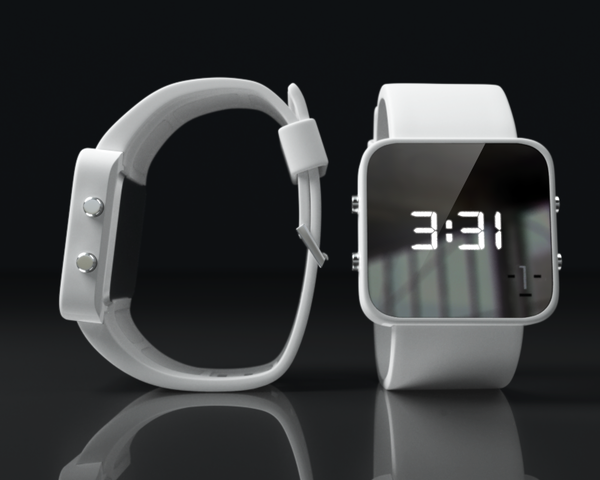
In your words, tell us about your product and what it does.
The 1:Face watch uses the power of consumers to change the world. Each watch is paired with a specific cause and metric when bought that metric is carried out in the field by our partnering charities.
What gave you the idea for your product and what makes it unique?
This is my 6th product in market but the closest one to my heart. As a product design and brand marketer I have had massive successes from having a product worn in the Super Bowl, to creating brand strategies for artists like P.Diddy & Drake, and even a viral product in 2010, the “Bed Intruder Costume.” But this one is different, much different, a brand which creates good in the world and helps humanity. The idea stems from the theory that life is about helping others. Money is great and all but in the end we all eat three meals and sleep in one bed.
The brand was structured around the design of the watch. The mirror aspect of the watch is what always stood out to me and has a unique appeal to it. Every time I looked into the watch to check the time and saw my face I pondered upon myself. Thats when the connection hit me that the face looking back at me was the face of change and the slogan came about “Changing the world 1:Face at a time.” The rest is history.
Why did you turn to crowd sourcing vs seeking a business loan, bootstrapping, VC’s, or other means of funding?
In 2013, the age of information, these old methods of being funded are dead. Banks are not frivolous with business loans, bootstrapping will only get you so far before time runs out and your demand fizzles out, VC’s of today are greedy ones which want heavy stakes in companies with only money to offer and no knowledge.
Crowd sourcing was the obvious choice for this project because this product and brand are about the people. This was not about our firm or me as a designer or even the charities which are involved this was about people helping other people!
How did you choose between Kickstarter or Indiegogo?
Kickstarter is a platform which caters towards technology and gaming whereas Indiegogo caters towards causes and charity as well as innovation.
What were your goals initially and how did you come up with those figures?
Our goals was to create mass exposure on the first month of launch which would create mass market penetration.
How many people have contributed so far and how much towards your goal?
To date we have over 100,000 Units in market worldwide.
How were you able to get traction initially and your first few contributors?
In launching any product/brand you should always launch your social media channels first! If you have created a great product your target market will find you. Our core demographic found us through instagram. We have over 87,000 followers and counting on our instagram @1Facewatch.
What other kinds of marketing have you done elsewhere to get momentum?
We concentrate on press outlets and creating great cause and marketing assets and releasing them on our social media channels. Everything from photos to videos which show not only the product but also the causes and the change which has been created around the world.
How were you able to get featured / noticed on major publications?
Press is a jaded beast. You either have relationships or you just pitch and even though we have relationships with many major outlets they did not cover the project until we broke $100,000 on the campaign. People have to understand these outlets receive over hundreds if not one thousands daily. Your email subject line really needs to catch their attention because if it does not they will not even bother opening up your email. Do NOT ever send a mass email out to publications, it is is considered disrespectful, each email should be catered directly to the editor and the content of the website and why your piece is the best fit over others. In the end understand the press is doing you a favor and they will not cover your piece unless it does something for them as well.
Did you have one single incident that really put you on the map? If so, what was it?
I think coverage from the first major publication “Mashable” gave us massive exposure and all the other blogs followed suit. You always try to get to the big boys first because everyone else just follows the leader.
What do you wish you would do differently for your next crowdfunding project?
The only thing we would have done different is not announced such a quick ship date. We did not have the man power at our warehouse to ship over 12,000 units within 3 days.
What is your best advice for people seeking a successful crowdfunding campaign?
Keep the video short and to the point! Pitch the press and build relationships weeks before you launch! Have random people watch your video before you launch to see what their synopsis is of the project without you having to tell them!
Ultimately, what do you think is the single biggest factor in your success?
The 1Face video was not only entertaining but inspiring even though it was the first video I have ever directed I must say it turned out excellent and to the point. The simplicity of the campaign and perks was the other major factor.
Where can readers find out more and also contribute towards your project?
The fastest way to order one is via 1:Face Watch and our largest vendor thus far is Journeys stores nationwide. You can learn more at our indiegogo campaign too.
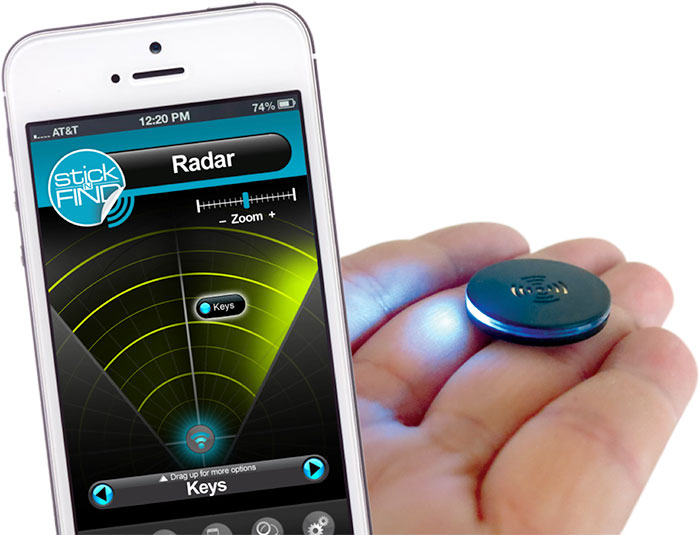
Tell us about your product and what it does.
The StickNFind is a con-sized Bluetooth LE (low energy) location sticker that tracks just about anything – keys, wallets and even pets – within a 150 ft. radius. Through the free StickNFind smartphone application, people can track any misplaced or lost items the stickers may be affixed to.
What gave you the idea for your product and what makes it unique?
The inspiration for the StickNFind came from my family, especially my oldest daughter after losing her new cell phone and my son, who regularly misplaces our car and house keys. With the advancement of Bluetooth LE and the recent uptick of people using smartphones, I thought this would be the perfect time to create the StickNFind. While StickNFind did not reinvent the wheel with RF and radio tracking systems, what makes StickNFind unique is its small size and the ability to track items using your smartphone as a radar screen.
Why did you turn to crowd sourcing vs seeking a business loan, bootstrapping, VC’s, or other means of funding?
Before settling on crowdfunding, I did consider seeking business loans and pitching venture capitalists. The deciding factor for me to crowdfund came down to the long-term commitment. This was going to be my baby and I wanted to ensure that I had creative and design control over the StickNFind in this stage, allowing me to stay proactive in the product’s development and carry out my original vision. More importantly, crowdfunding gave us direct contact with consumers and their initial feedback about StickNFind. This gave us the opportunity to understand what resonates with customers and for us to make adjustments and add features, like having different color variations. I would have never thought of making pink StickNFinds otherwise.
How did you choose between Kickstarter or Indiegogo?
Our company initially wanted to fund the StickNFind through Kickstarter, but was rejected for not meeting their guidelines. We took our campaign to Indiegogo, where Slava and his team have been professional and supportive of our campaign since Day One. With their help and support, we were able to launch two other successful campaigns for Bluetooth-enabled gadgets: the BluTracker (indiegogo.com/blutracker) and MeterPlug (indiegogo.com/meterplug).
What were your goals initially and how did you come up with those figures?
Our initial goal for the StickNFind was $70,000. To come up with this figure, we factored in costs for developing the technology, developing a functional mobile app, manual labor, manufacturing and parts to create the StickNFind.
How many people have contributed so far and how much towards your goal?
More than 12,000 people contributed to our campaign, helping us raise $931,470, which is about 13 times more than the $70,000 we set for ourselves.
How were you able to get traction initially and your first few contributors?
I think it really came down to timing of the campaign. We launched in December and were a bit slow at first. However, we began to see traction build as we shared our ideas with influential figures in the tech and gadget field; I even flew out to their offices and showed them how StickNFind works. The campaign caught on like a firestorm once those people shared their experiences with their audiences. We were also able to secure a booth space at CES 2013 in January, where every tech journalist and gadget geek was on hand to see the first prototypes and engaged their audiences by reporting on this new technology.
What other kinds of marketing have you done elsewhere to get momentum?
We’ve also utilized social media marketing on Facebook and Twitter to announce the campaigns, answer any consumer-related questions and provide announcements/updates to the StickNFind .
How were you able to get featured / noticed on major publications?
The Silver Telegram, our PR agency, helped us to get featured on several prominent business, consumer and tech outlets, including FOX Business, TODAY Show, Engadget, Mashable and TechCrunch, just to name a few.
Did you have one single incident that really put you on the map? If so, what was it?
CES 2013 was a real pivotal point for us. The timing was just right, where all eyes were fixed to one of the largest electronics shows in the world. With so many updates and news coming out from the show, StickNFind was consistently recognized as a new technology that needed to be watched, which definitely added more fuel to our Indiegogo campaign.
What do you wish you would do differently for your next crowdfunding project?
I honestly wouldn’t change much. The StickNFind was the fourth most-funded campaign on Indiegogo. If I was going to start a new campaign today, I would repeat many of the things we did, but without much of the guess work this time around.
What is your best advice for people seeking a successful crowdfunding campaign?
You have to approach crowdfunding like any other business. You have to clearly define a problem and how your product is a solution for that problem. For me, the problem was that people lose and misplace things. The StickNFind solves those problems and we were able to communicate that easily because every person can relate. When you define your problem, have your solution and truly believe it will work, the sky’s the limit.
Ultimately, what do you think is the single biggest factor in your success?
I think what makes the StickNFind successful is the number of people who recognized the practicality of the StickNFind and how it can make lives easier. The biggest validation came to us while being face-to-face with people at the tradeshows we attended. When people stopped by our booth for a demonstration the general remark was “I should have thought of this technology for my wife/husband!”
Where can readers find out more and also contribute towards your project?
Readers can visit StickNfind for more information and to purchase them. You can learn more about our indiegogo campaign as well.
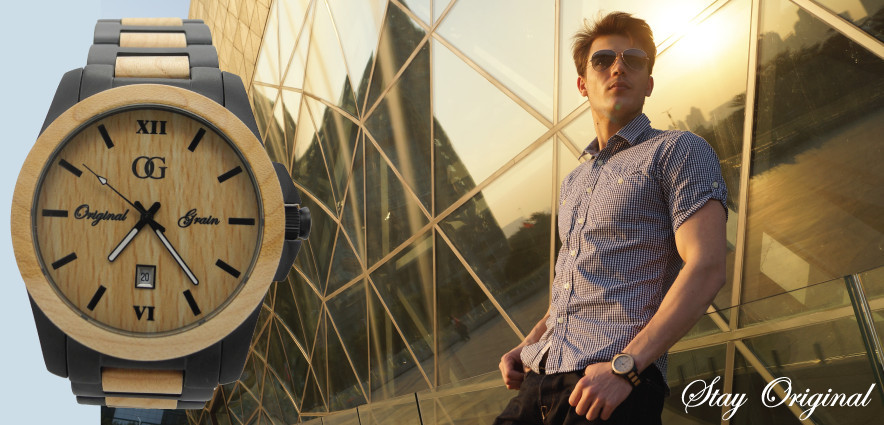
Tell us about your product and what it does.
We sell a line of men’s watches, that are made from 100% all-natural wood and stainless steel. We currently have 4 different variations of our watches for men and are introducing a women’s line to our website very soon. Our watches use a reliable Japanese Miyota Quartz movement and sapphire crystal glass.
What gave you the idea for your product and what makes it unique?
Our watches were inspired from my experiences growing up in the beautiful pacific northwest (known for it’s forests) and then living abroad in Hong Kong (one of the most fashion forward cities in the world). Essentially, the wood represents the PNW and then stainless steel represents the cityscape of HK.
I always liked the look of all wooden watches, however, they didn’t have that “real” watch feel (as they were too lightweight). By incorporating stainless steel with the natural features of wood, I was able to give our watches a hybrid design or as we like to say, “The Next Generation of Wood Watches”.
Why did you turn to crowd sourcing vs seeking a business loan, bootstrapping, VC’s, or other means of funding?
Crowd sourcing, in my opinion, is a low risk opportunity with the potential for a lot of success. Not only does it give you the ability to raise capital without having to give up equity, but the amount of exposure for your brand/product is incredible. The crowd funding community helps turn a person’s idea into a real business and it’s exciting for everyone.
How did you choose between Kickstarter or Indiegogo?
This was an easy decision for me (we chose Kickstarter). When doing research, it was obvious that Kickstarter had many more similar products and more people backing those products than the other platforms. In some ways, Kickstarter is like the “Home Shopping Network…for Men”. Plus, I knew people who had done both, and Kickstarter campaigns had a greater level of success.
What were your goals initially and how did you come up with those figures?
Our initial goals were set quite low actually. We set our funding goal at $10,000. I was confident that we could do well over that, but from my research, the goal amount didn’t seem to effect a person’s decision to back. Thus, if I could raise enough to “Kickstart” our business, then that would be a step forward.
How many people have contributed so far and how much towards your goal?
We finished our campaign with over 2,000 backers and raised over $390,000.
How were you able to get traction initially and your first few contributors?
Prior to launch we made a strong effort to reach out to our own networks and spread the word that way. Having a solid number of friends and family that are willing to share your project on their social media will undoubtedly generate traction. Try to get people you know to commit to backing your project when it launches…and most importantly, as soon as it launches, not a couple days later, but right when you go live.
What other kinds of marketing have you done elsewhere to get momentum?
Honestly, we didn’t do a lot of marketing other than on social media. As per your next question, blogs are the best way to get momentum.
How were you able to get featured / noticed on major publications?
This was an area I would work to improve upon if I were to do it all over again. We contacted a lot of major blogs/publications without much luck. Looking back, I realize now that you must be creative in your approach and ultimately, very persistent. And if you have ANY warm leads, use them! A simple introduction will go a long way.
Did you have one single incident that really put you on the map? If so, what was it?
For us, the product was the driving force for our success. We offered something that people hadn’t seen before and it’s uniqueness was very apparent. In some ways, we saw how strong our product truly is because of the lack of coverage on major blogs that can really catapult you forward.
What do you wish you would do differently for your next crowdfunding project?
Be more successful getting covered on blogs and in the media.
What is your best advice for people seeking a successful crowdfunding campaign?
1. Create something unique and of high quality
2. Be genuine in your delivery of the product and your brand
3. Take the time to present the product well. It doesn’t have to be “pro” level work, but we all know when someone makes a legitimate effort.
Ultimately, what do you think is the single biggest factor in your success?
I would say we have a very genuine appeal and authentic brand. Everyone has a story to tell, so do a great job of telling that story. There is no need to make anything up or embellish…consumers are too smart for that. We stay true to ourselves and our vision for our brand, and that is reciprocated with our product(s).
Where can readers find out more and also contribute towards your project?
We are no longer live on Kickstarter, but are taking “pre-orders” at Original Grain for a discounted price. There you can see all of our watches and read a bit more about our brand.
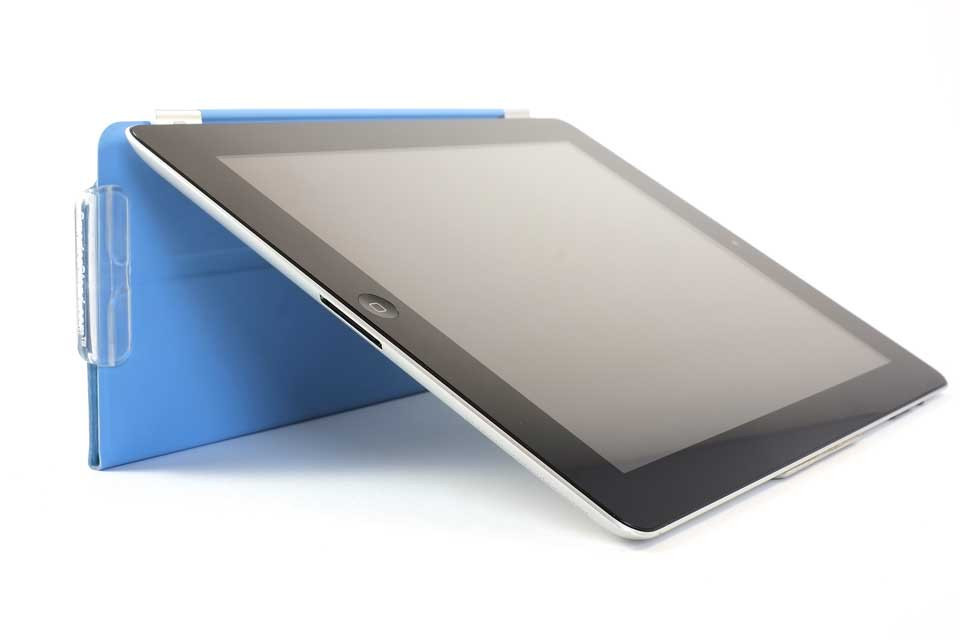
Tell us about your product and what it does.
The Smarter Stand for iPad converts the iPad smart cover into a versatile stand with in 3 ergonomic positions that enable more comfortable reading, web browsing, gaming and movie watching. I recommend watching the video on the project page to get a better idea of what it does. People usually have a “wow moment” when they watch it.
What gave you the idea for your product and what makes it unique?
Before the Smarter Stand, people could only use their iPad in 2 stand positions: one that’s too low and another one too high and unstable. Of course they could also buy a heavy and expensive iPad stand or a bulky and often clunky 3rd party stand/cover but none of these options were practical.
By tinkering with the iPad and its Smart Cover at breakfast one day, I discovered a way to enhance the Apple Smart Cover in a way that provides much better viewing angles without adding weight or bulk just by using a couple of specially designed clips. And that’s how the idea for the Smarter Stand was born!
Why did you turn to crowd sourcing vs seeking a business loan, bootstrapping, VC’s, or other means of funding?
I never intended to launch an accessory business. At first, I really enjoyed using my prototype and I was just curious to see if I could make and sell a few products as a one-off. Crowd funding was ideal because it allowed me to easily test the waters before committing to manufacturing anything or even setting up a company.
How did you choose between Kickstarter or Indiegogo?
Kickstarter was the bigger name by far back then. Indiegogo was my backup plan in case Kickstarter didn’t greenlight the project.
What were your goals initially and how did you come up with those figures?
I set my funding goal to $10k. I knew it would cost me more than that but I wanted it to be low enough so people wouldn’t stay on the sidelines and wait for some lofty goal to be reached before jumping in. It was somewhat of a gamble but it worked.
How many people have contributed so far and how much towards your goal?
8,260 backers contributed and the project reached a total funding of $157,638.
How were you able to get traction initially and your first few contributors?
I think it was word of mouth for the most part. A lot of projects in crowd funding are me-too products. How many slim wallets does a person need? So when something new, clever and unexpected hits Kickstarter people notice and they share. The press ended-up covering the product really well too for the same reason. So I tried to amplify those effects as much as I could obviously. But they started naturally. I was pretty clueless when I launched the campaign!
What other kinds of marketing have you done elsewhere to get momentum?
None. Even a lot of my friends didn’t know I had a project on Kickstarter.
How were you able to get featured / noticed on major publications?
They snowballed for the most part: a big blog would write something and others would pick up the story. I also offered all the bloggers who covered the product to try out pre-production samples and most of them accepted to post some kind of review. So that got me another batch of blog posts later in the campaign, some of them with lots of pictures and a detailed review.
Did you have one single incident that really put you on the map? If so, what was it?
Not really. It was a combination of many blog posts and viral sharing.
What do you wish you would do differently for your next crowdfunding project?
I already had a crowd-funding project since this one and I applied a lot of my learnings to it. One of them was to charge extra for international shipping and factor in fulfillment costs into my price. I got killed with unexpected shipping costs on my first project. I also didn’t know much about many things related to making a product cost effectively so I probably overpaid for a lot of things.
What is your best advice for people seeking a successful crowdfunding campaign?
Make a kick-ass video that lasts 2min tops and sounds sincere and lets the user empathize with the problem you’re solving. The video is your #1 investment. It WILL make or break your project. Don’t make it too salesy: it’s not a laundry detergent commercial. Also, make a top notch project page with great photos and have many friends review your page and the video before pushing the project live.
Ultimately, what do you think is the single biggest factor in your success?
2 things: a product that is different / newsworthy and a video that showcases it in a compelling way.
Where can readers find out more and also contribute towards your project?
For those who have iPads, the Smarter Stand is a must have (and cheap) accessory. The Kickstarter is over but they can buy the product from Smarterflo.
